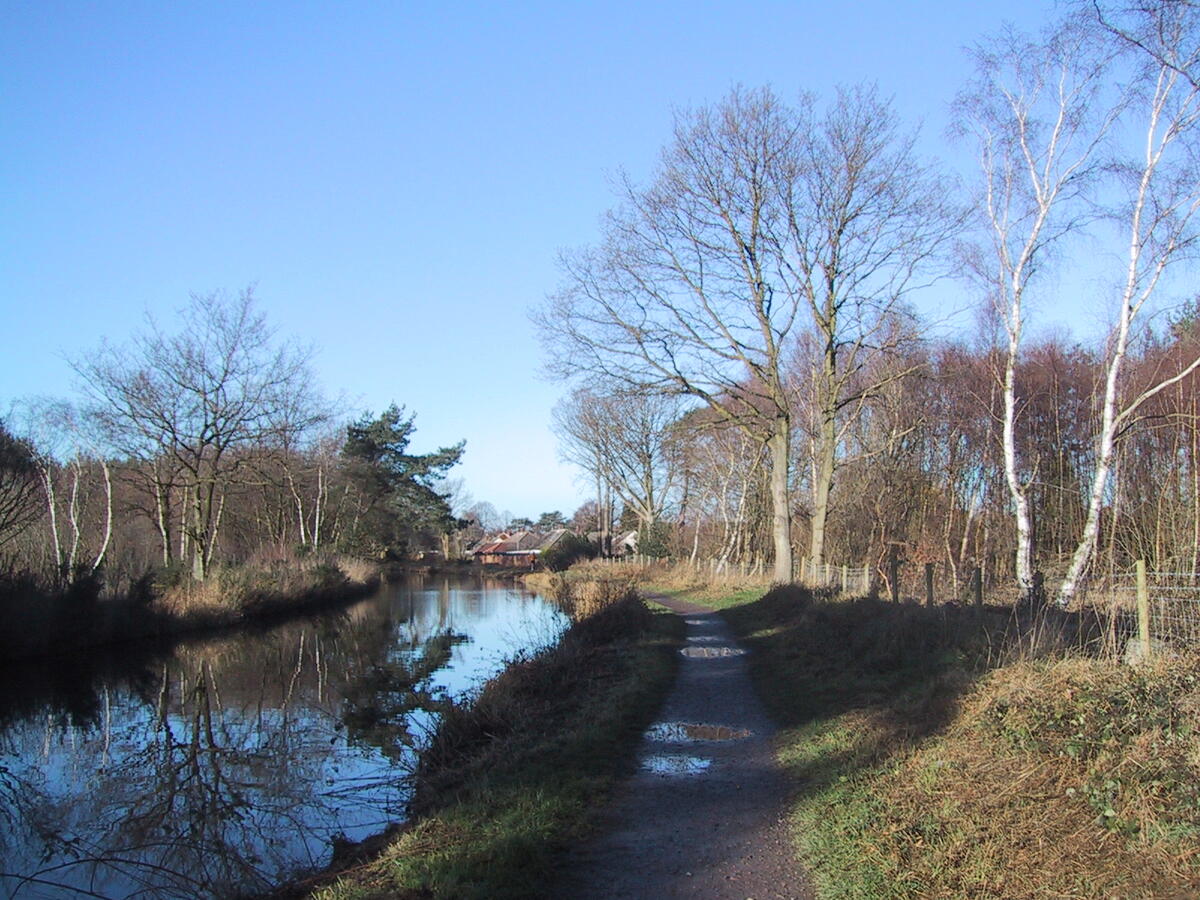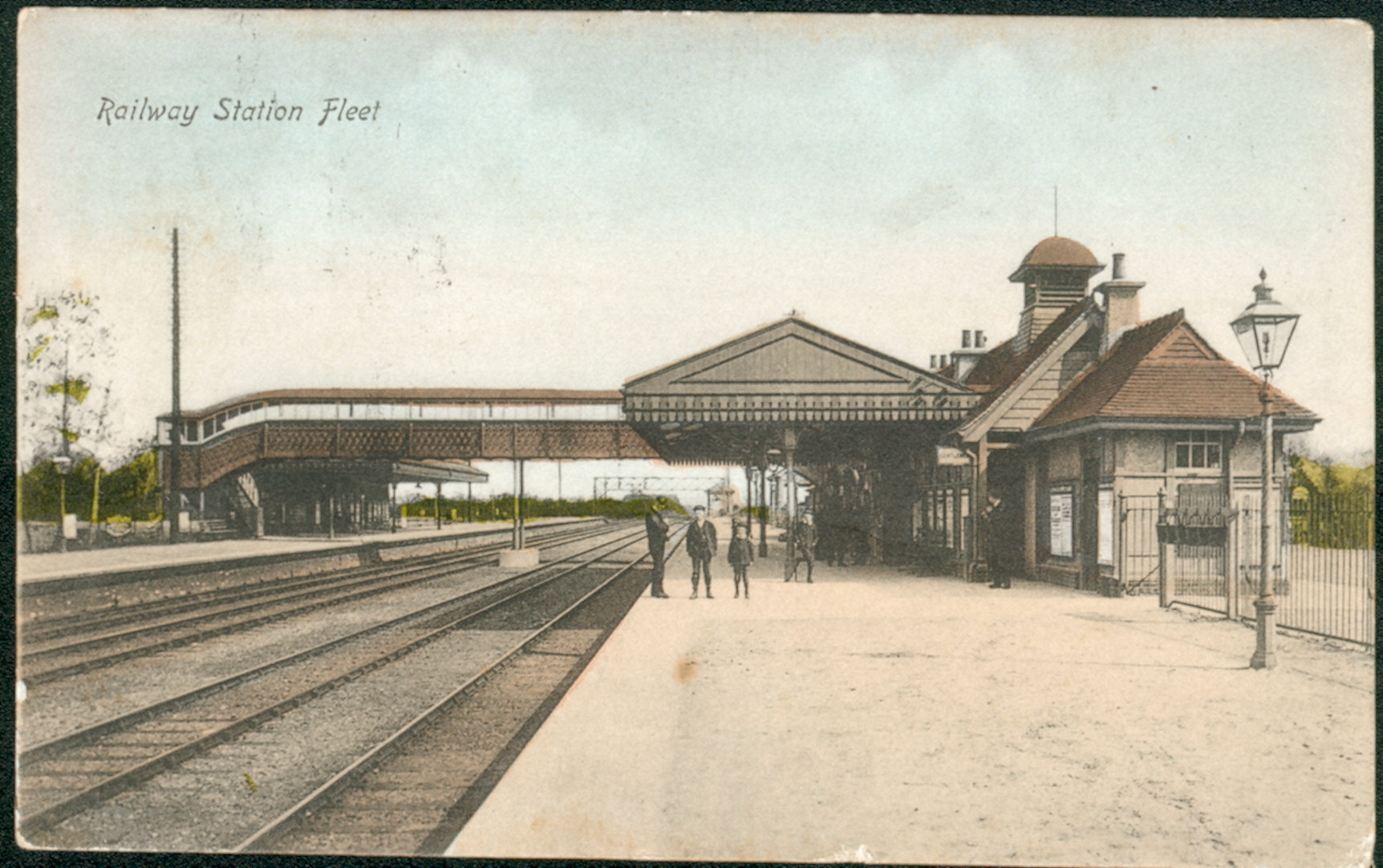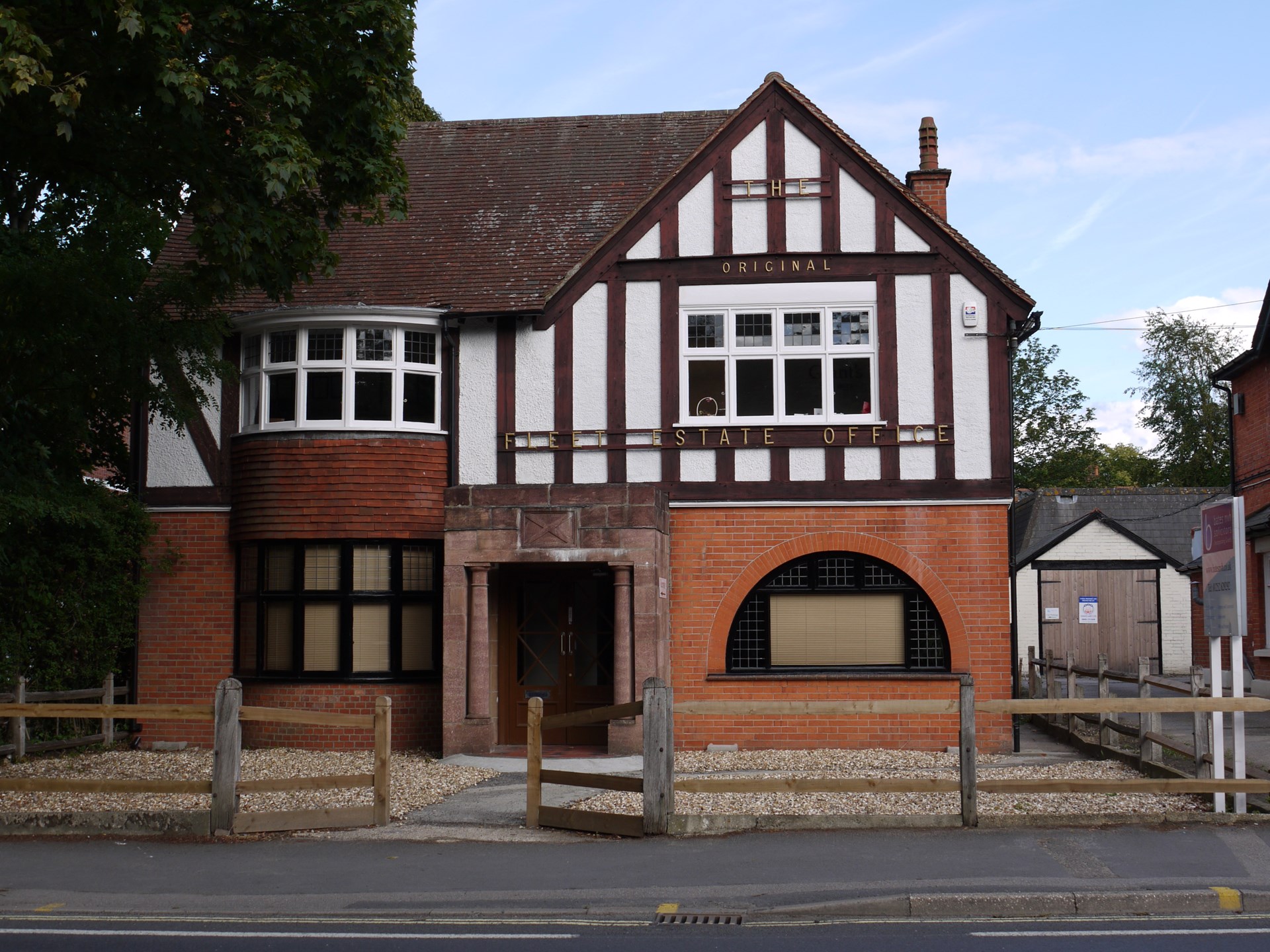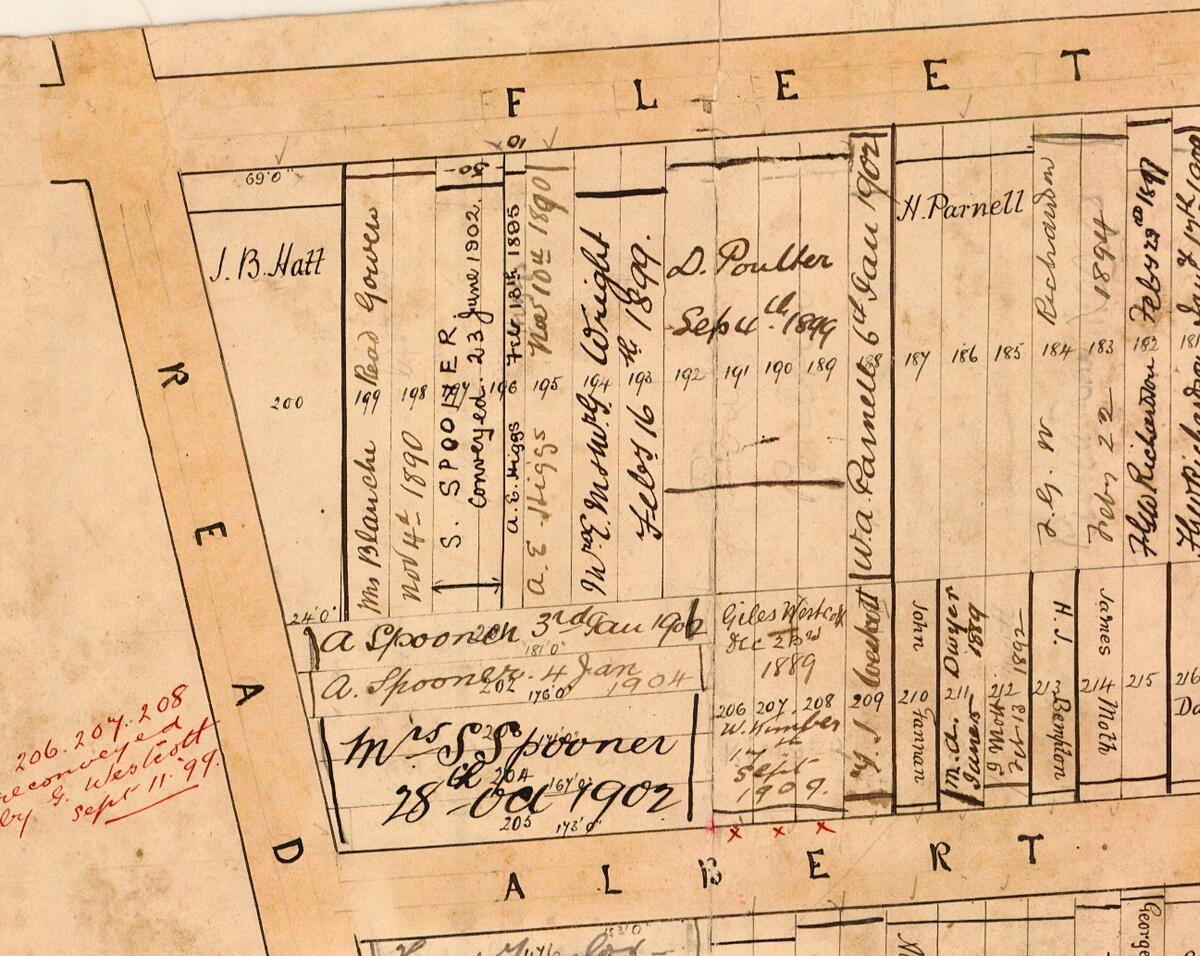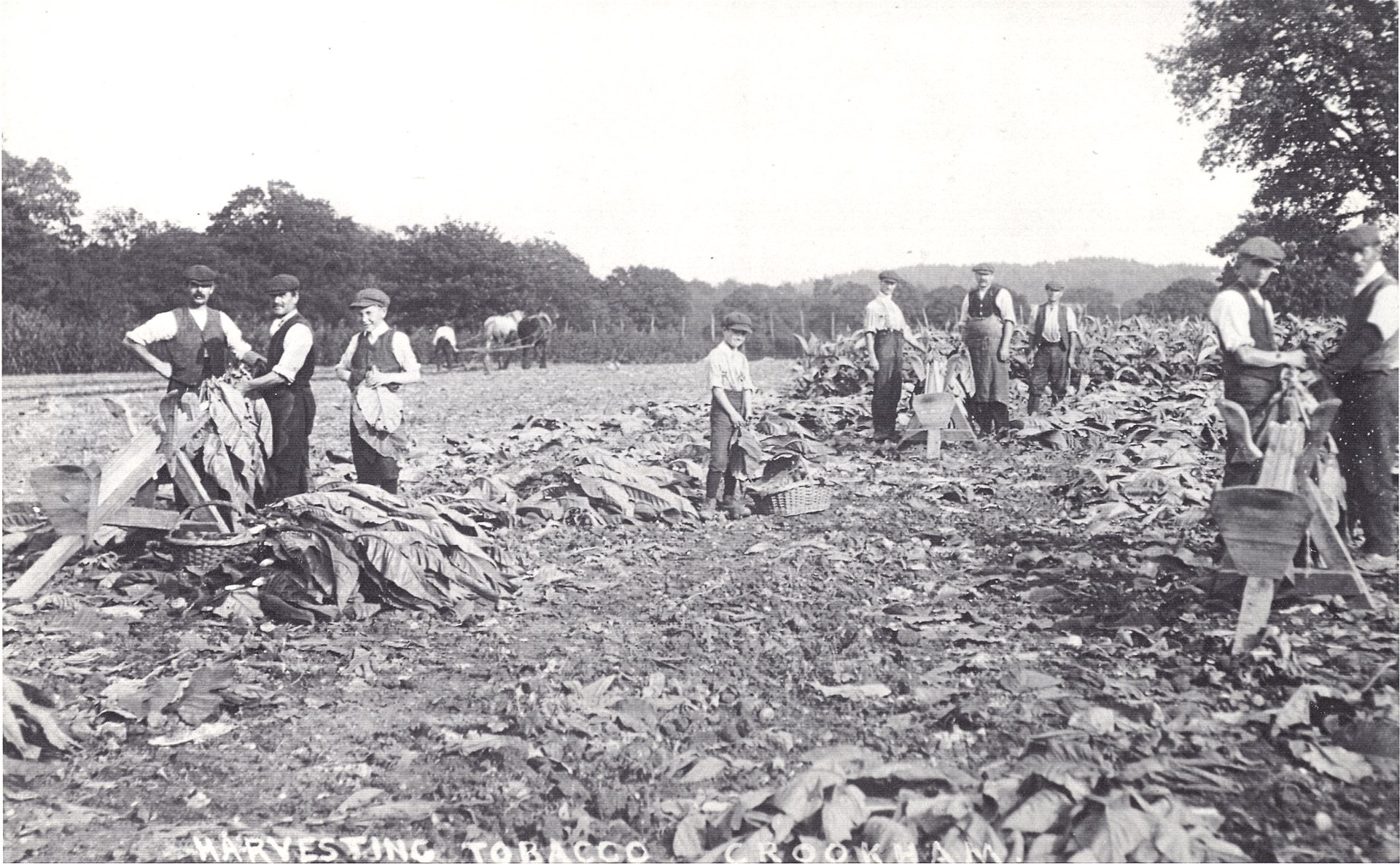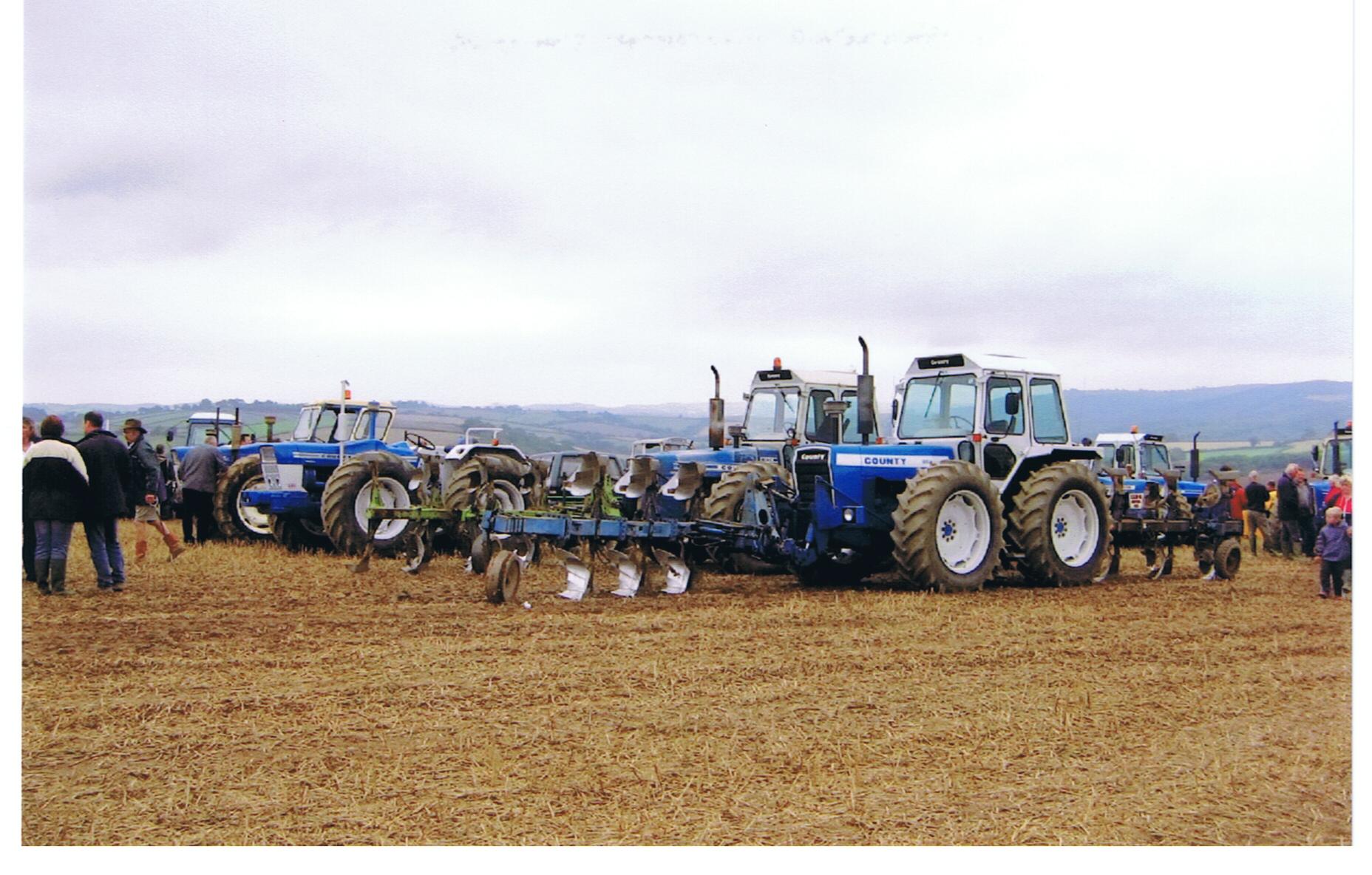Brief History
A VERY BRIEF HISTORY OF FLEET AND CROOKHAM
What is now Fleet and Crookham was for centuries an almost treeless and uninhabited heathland that people used to graze animals and cut peat for fuel. Fleet Pond provided fish for the Bishops of Winchester for centuries. Crookham Village is a very old settlement on the land more suitable for farming, and the villagers attended Crondall Church. Even the opening of the Basingstoke Canal in 1794 had little impact on this rural way of life.
An Enclosure Act passed in 1829 changed all that. The poor lost their rights over the common and by 1834 the Enclosure Commissioners had divided the common between people who already held land nearby. The enclosure meant that the land could be fenced, made freehold and sold for building.
Development started slowly with about 20 new houses by 1839. The Oatsheaf, (shown on our heading) first licensed in 1838, was built at the crossing of the old Reading to Farnham Road and the Crookham (Village) to Fleet (Pond) Road. Christ Church, Gally Hill, built in 1841, gave Church Crookham its name and All Saints Church, Fleet was erected in 1861.
The railway line through Fleet opened as far as Winchfield in 1838 and a siding and platform at "Fleetpond" were authorised in 1847. The Station Hotel was built in 1892.
Land agent Henry Brake bought 457 acres of the enclosed land in 1878. He made roads including Albert Street, Clarence Road and Connaught Road, Victoria Road, and those at Pondtail. He set out thousands of building plots for sale and his son Charles continued these sales from his office in Fleet Road.
The area attracted new residents and Fleet's population increased from 380 in 1871 to 2000 in 1901. London bankers and lawyers created large estates for themselves, army officers retired here and others set up businesses, large and small. Tobacco was grown commercially for 25 years on the Redfields estate, and County Commercial Cars Ltd. of Albert Street built tractors to their own designs for over 50 years.
After World War I some large estates, including Basingbourne, Courtmoor and Dinorben, were sold for housing. Farmland at Ancells Farm and Zebon Copse, and heathland at Elvetham were developed, and many owners of smaller properties sold off part of their gardens.
More recently, homes on large plots have been replaced by several houses or flats.
The Fleet and Crookham Local History Group has maps and records that help explain the development of the area and trace the history of individual houses.
